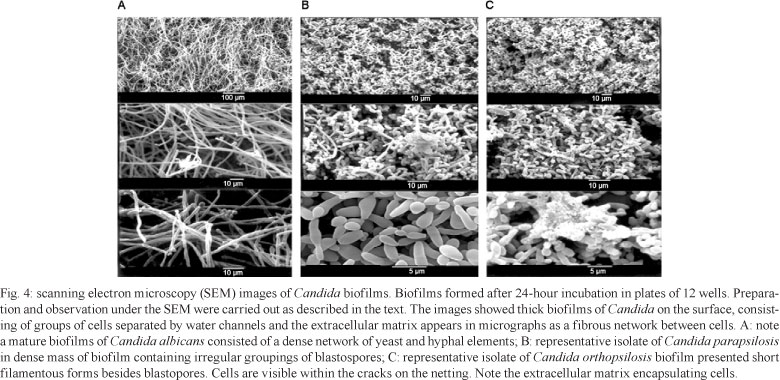Candida parapsilosis, currently divided into three distinct species, proliferates in glucose-rich solutions and has been associated with infections resulting from the use of medical devices made of plastic, an environment common in dialysis centres. The aims of this study were (i) to screen for Candida orthopsilosis and Candida metapsilosis (100 environmental isolates previously identified as C. parapsilosis), (ii) to test the ability of these isolates to form biofilm and (iii) to investigate the in vitro susceptibility of Candida spp biofilms to the antifungal agents, fluconazole (FLC) and amphotericin B (AMB). Isolates were obtained from a hydraulic circuit collected from a haemodialysis unit. Based on molecular criteria, 47 strains were re-identified as C. orthopsilosis and 53 as C. parapsilosis. Analyses using a formazan salt reduction assay and total viable count, together with microscopy studies, revealed that 72 strains were able to form biofilm that was structurally similar, but with minor differences in morphology. A microtitre-based colorimetric assay used to test the susceptibility of fungal biofilms to AMB and FLC demonstrated that the C. parapsilosis complex displayed an increased resistance to these antifungal agents. The results from these analyses may provide a basis for implementing quality controls and monitoring to ensure the microbiological purity of dialysis water, including the presence of yeast.
Candida parapsilosis; Candida orthopsilosis; biofilm; haemodialysis solution











